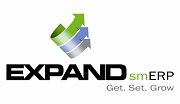One of the most challenging aspects of running an enterprise is learning how to effectively manage your inventory so you have what your customers need and want without having too much excess. Whether it’s deciding how much to order, when to order, keeping an accurate count of your products, or knowing how to handle excess and shortages, knowing how to control inventory properly will help ensure your business’s success.Things may seem complex, but there’s a simpler way out and a way forward.
The first and most important step is to achieve a clear, meticulous understanding of the why’s and how’s. Next, that understanding needs to be understood and internalized by all your employees. This way, all stakeholders and employees in your business are invested in adhering to a gold standard of inventory control management.
Step 1 : Assessing or sorting your Inventory is the first step to optimal inventory
Step 2 :Next, invest in an inventory management software. The first step to inventory control is being deeply aware of how much inventory you have on hand at any given time, what type of inventory you have available, where the inventory is located, and how it changes over time. Today, the market is flooded with abundant software applications that can assist in this process. Be sure to spend some time searching the software market so that you are assured of a trustworthy software company.
Step 3 : Create clear labels. Each item in your inventory should have an item number, a quantity, and a basic description which includes the vendor name and any other important details. This makes it easy to identify precisely what the item is.If you have extensive amounts of inventory, look into a barcode tracking system. This will allow you to place a barcode on each item, which allows staff to quickly scan, identify, and transfer inventory information into whatever software you are using.
Step 4 : Constantly updating your inventory: Inventory management software can be a helpful way to keep track of your inventory since it automatically updates your inventory records as new sales and purchases are inputted into the software. It is important, however, to have a system of manually monitoring your inventory so you have a way to cross-check the accuracy of the software
Step 5 : Advance to a point-of-sale (POS) inventory management method once your business size grows big enough to need a more accurate form of inventory control. Point-of-sale inventory control is handled, as the name suggests, at the point of sale, which implies that the cash register or computer you use for check-out at your business keeps count of your inventory. It allows you to run reports at the end of the business day, the month, the sales report period, or any other designated time frame.
Step 6 : Maintaining the right level of the inventory is the key to efficient inventory control without using spreadsheets. The goal of inventory management is to keep up with demand which will need enough inventory to meet whatever your projected sales are.
Limitations or Disadvantages of Spreadsheet Inventory Management
If you are still among those entrepreneurs who use spreadsheets for inventory management you will be able to relate with these pains.
- No real-time inventory data.
It’s difficult to constantly synchronize the inventory figures in your inventory spreadsheet with the amount that you actually have in stock. If you manage your inventory at multiple locations with varied units of measurements, then inventory tracking on spreadsheets becomes next to impossible.
- To err is only human not automation.
All the values and units in your stock inventory spreadsheet should be keyed in manually, thus increasing the chances of mistake. It becomes even worse when your inventory is frequently moved between different locations. This is why you make frequent audits and reviews of your spreadsheets inventory.
- Slow process equals wastage of time
With inventory management software in spreadsheets, it will take you hours to track your inventory.
Inventory management spreadsheets makes it difficult, and at some levels, impossible to create several accounts with different access rights that could manage your inventory at different permission levels.
- Zero backup and no transaction history.
With inventory marked on spreadsheets, you cannot view your transactions back in time to analyze your inventory trends and make forecasts.
- Limitations in user interface and shortage of functionalities.
Spreadsheets are all about rows and columns, nothing else. It offers valuable functions, but it’s difficult to implement them as compared with modern inventory management tools.
Unfortunately, for medium sized or large businesses an inventory managed on spreadsheets is outdated and insufficient due to a huge amount of tasks and transactions. The more established and developed you want your business to be, the more progressive and sophisticated inventory management tools it needs. With an automated inventory management system it is much faster and more efficient to run your business seamlessly. Automation and technology is the future of all businesses. Without automation software it is impossible to achieve desired goals in time.
To know more details contact us at +91 9007026542.






